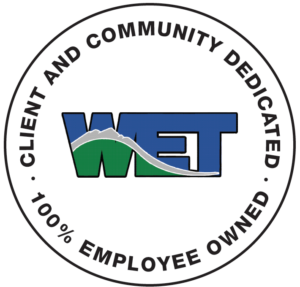GERMAN GULCH RESTORATION—IRRIGATION WELL AND WATER RIGHTS CHANGE
Butte, Montana
WET was hired by the George Grant Chapter of Trout Unlimited (GGTU) to provide technical oversight and project management of a large-scale restoration project in the German Gulch watershed. The project was administered with a grant from the NRDP. German Gulch is home to a population of native west slope cutthroat trout (WCT). As a genetically pure population, these fish are the ideal seed stock for the eventual re-population of a restored Silver Bow Creek. Also, German Gulch was heavily placer mined over the past century. The streambed, riparian, and upland areas suffered extensive damage from this activity.
Restoration included the following major tasks:
- Irrigation well design and construction, and appropriate water rights change application
- Completion of a pilot stream restoration including channel reconstruction and bank stabilization
- Implementation of riparian and upland habitat improvements including removal of mine tailings, revegetation and weed control
- Installation of a non-motorized public access trail and replacement of a failing bridge
- Facilitation of the purchase of three private mining claims and transfer into public ownership
- Implementation of a cultural resource assessment that results in the long-term protection of natural and cultural resources
A major task of the project, and the focus of this writeup, included design, testing, and installation of two large-volume irrigation wells. The irrigation wells were used to replace a surface water source from German Gulch the landowner was willing to leave in-stream to augment German Gulch flows during the summer. The task included drilling and completion of aquifer tests of a test well, designing the irrigation wells based on results of the aquifer tests, and specifying irrigation infrastructure to be used. The task also included changing the Point of Diversion from German Gulch to the irrigation well per MDEQ requirements. Two wells were drilled with capacities of 300 gpm and 150 gpm, respectively, and a successful water rights change application was approved by DNRC.
WET provided project administration, financial management, design, and oversight of all grant tasks on behalf of Trout Unlimited (TU). WET acted as TU’s liaison with all project stakeholders, including landowners, agencies, and volunteer staff. Our technical team provided oversight and comment on various restoration and engineering designs and was responsible for obtaining all project permits and paperwork.



